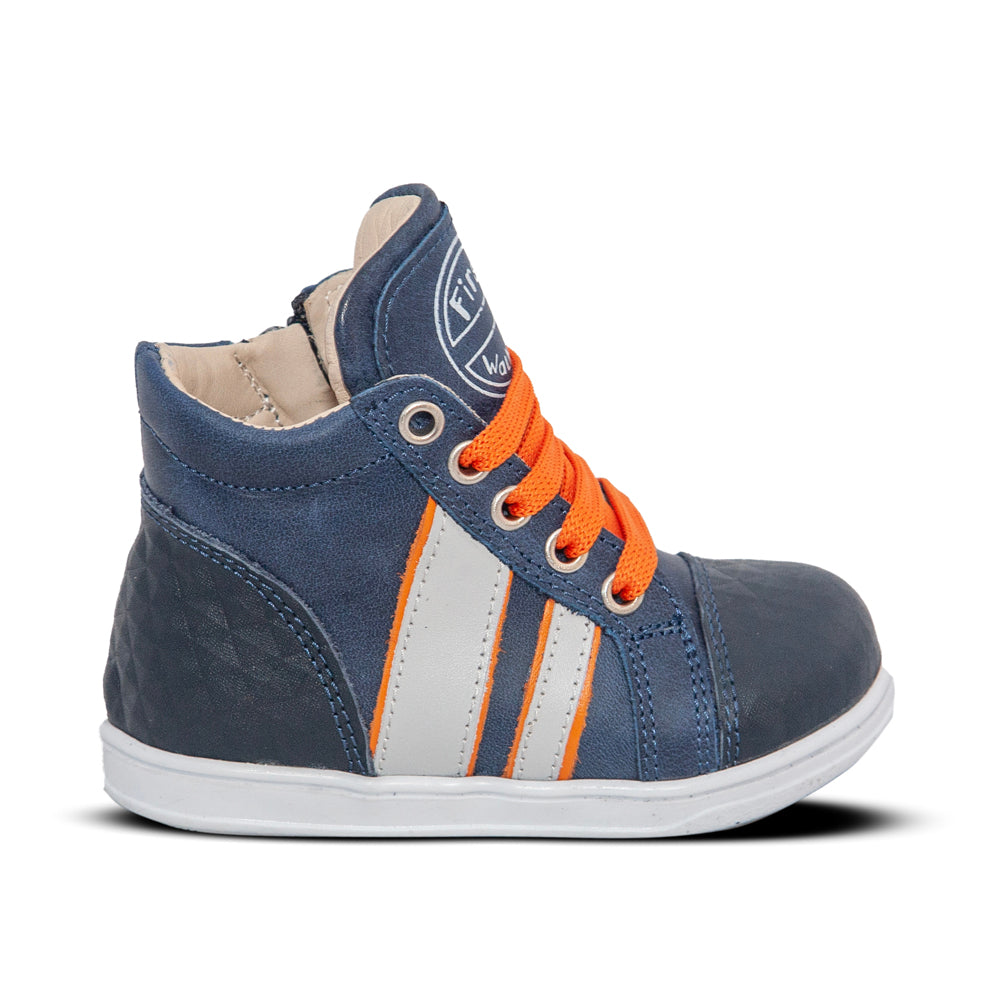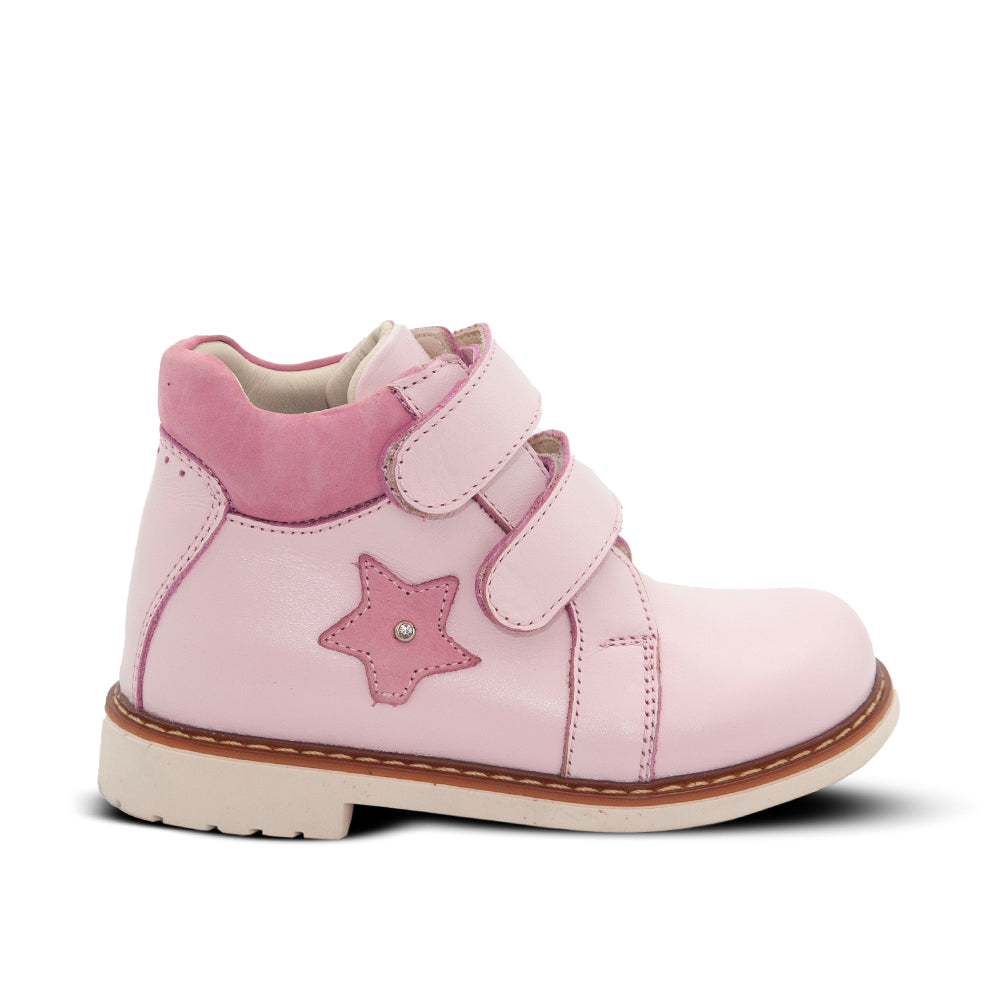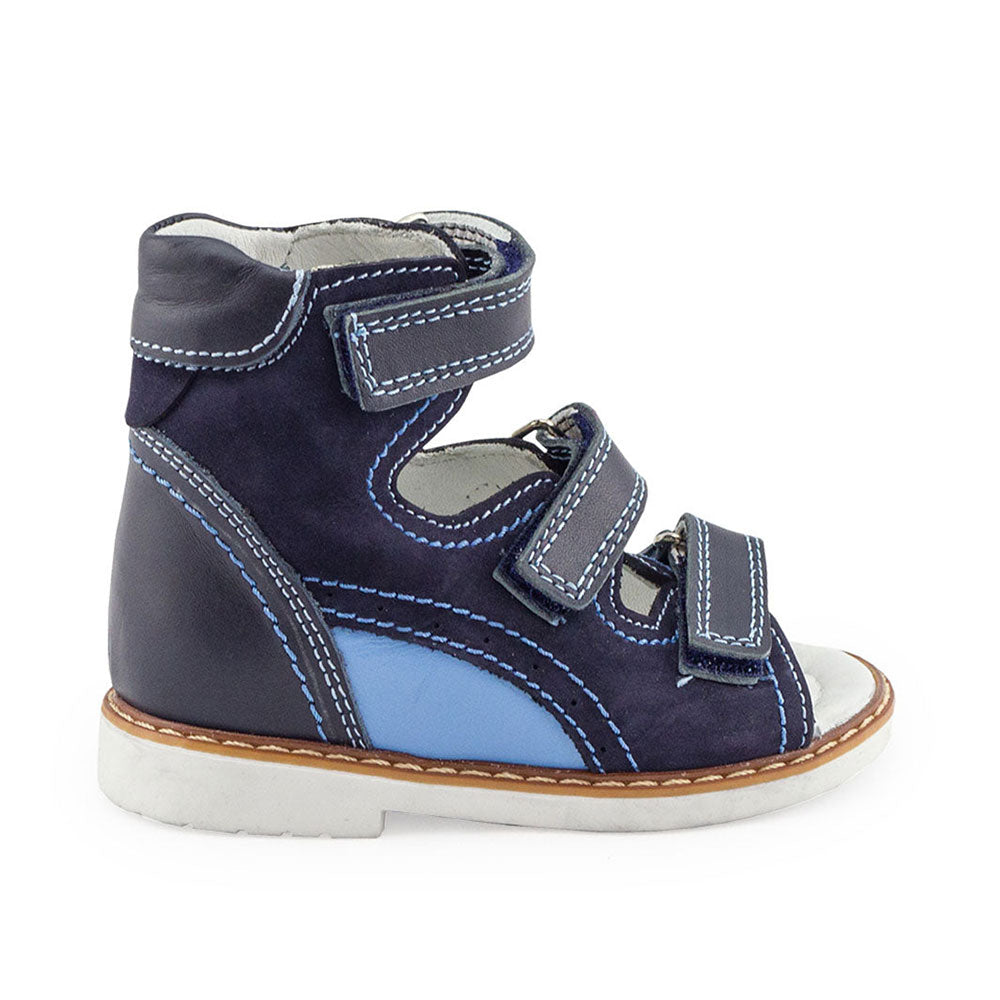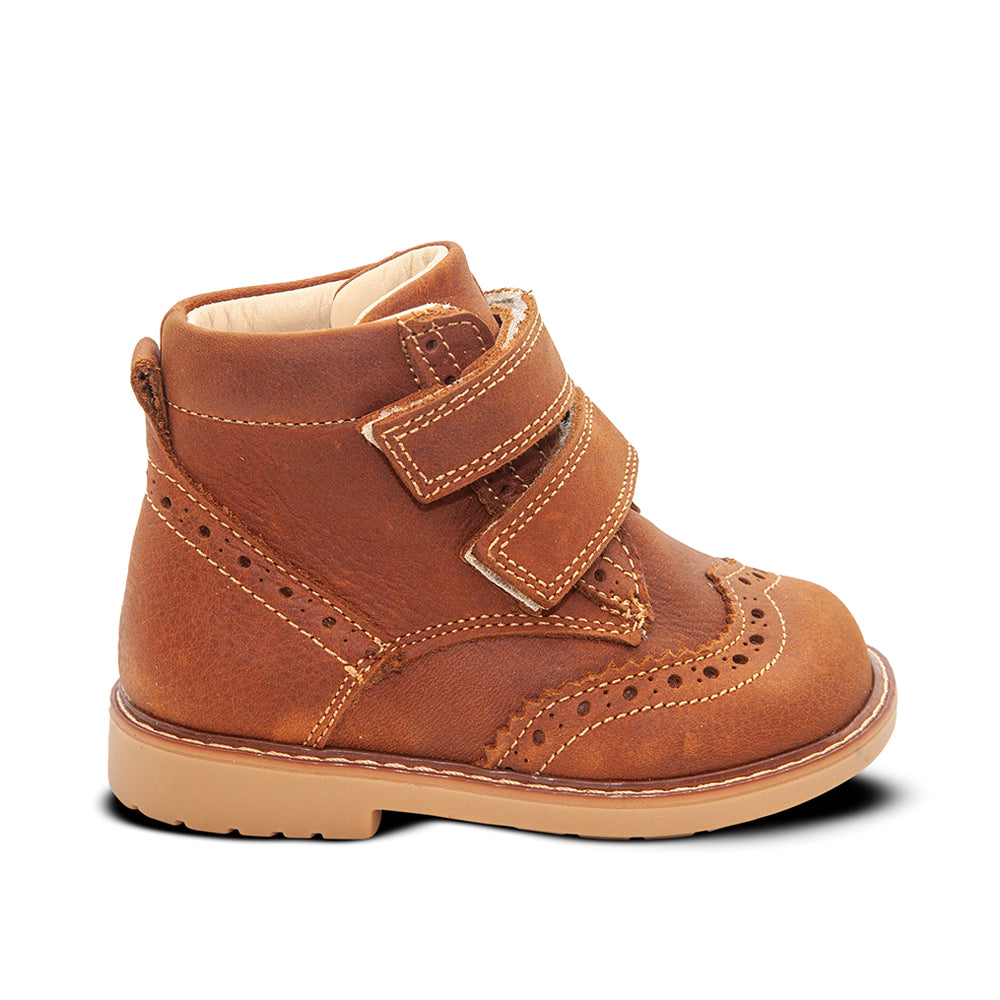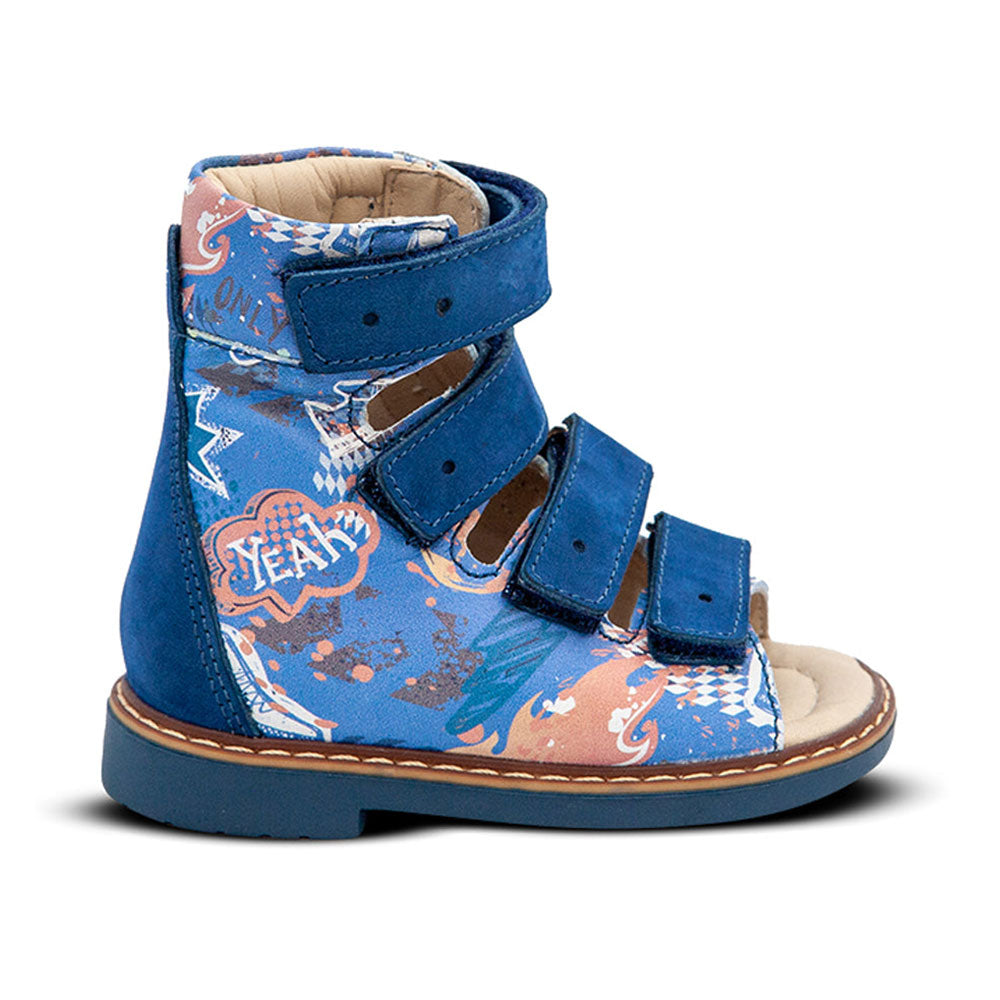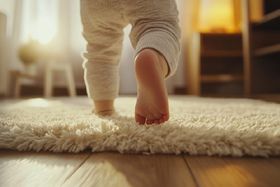Infant Developmental Milestones: From Newborn to First Birthday
More than just cute moments, your baby's first year is a period of incredible growth. Understand and celebrate every step of their development with this comprehensive look at infant milestones.
Updated August 7, 2025

Developmental milestones from infancy through childhood track a baby's development. You can use them to determine whether your little one is developing normally or if there are delays in one or more areas.
Below is a quick timeline of what your newborn should be doing at specific developmental milestones, expressed in their age.
» Check out our collection of orthopedic shoes (0-7 years old)
Key Infant Milestones: Month-by-Month Breakdown
Note: Please remember that this article provides general information about common developmental milestones for babies. It's not a substitute for professional medical advice, diagnosis, or treatment.
Every baby develops at their own pace, and there is a wide range of what is considered normal.
The milestones listed in this article are intended as guidelines only. If you have any concerns about your baby's development, please consult with your pediatrician or other qualified healthcare provider.
First Four Weeks
A newborn can recognize their mother's voice within the first few days of life. It comforts them as they adapt to their new surroundings and stimulates the language development areas of their brain.
During their second week, a baby can typically focus on objects 8 to 14 inches away, which you can notice while feeding as they concentrate on their mom. This activity helps develop their eye muscles.
Soon after, the baby begins to snuggle, finding its mother's scent calming and comforting. Although its movements are still jerky and uncoordinated, it will hold its posture toward its mother [1].
They also develop some gross motor skills, being able to kick their feet when on their back. But, their hands are folded in fists most of the time; there is coordinated suck from the breast.
They can look at people’s faces and become quiet when picked up. Finally, the baby also begins to use their vocal cords to make noises other than crying.
Note: The prenatal stage is essential for a child's development, as life begins in the womb. Mothers play a crucial role in creating a supportive environment, which includes providing proper nutrition and communicating with the developing baby.
1-3 Months of Age
At two months old, babies can [2]:
- Show interest in their surroundings
- Recognize and smile at familiar faces
- Briefly hold their heads up
- Kick their legs
- Move their arms
- Make sounds
- React to noises
- Track moving objects with their eyes.
- Hold a rattle placed in their hands
- Anticipate feedings and show interest and excitement when they see a breast or bottle nipple, opening their mouths.
4-6 Months
At this stage, babies are more socially aware and interact with their surroundings. They can [3]:
- Move with purpose
- Imitate sounds
- Enjoy babbling and cooing
- Communicate hunger, tiredness, frustration, and discomfort through different cries.
- Push up onto their stomachs, roll from side to side, bring both hands to their mouths, and briefly hold a rattle.
- They have also mastered key communication skills, experimenting with and communicating through sounds like "ma" and "da."
- Place both hands on the breast or bottle when nursing.
- Pull themselves forward to a sitting position when you hold their hands
7-9 Months
From 7 to 9 months of age, children can [4]:
- Pull to stand and may begin creeping or cruising
- Play with toys from a seated position
- Take objects in and out of containers
- Bang toys or blocks together
- Hold food to take bites.
- Engage and respond to commands
- Pronounce more words
10-12 Months
Between 10 to 12 months, babies can [5]:
- Sit without help
- Pull themselves to a standing position
- Walk while holding on to objects or a caregiver's hand
- Crawl, which eventually leads to walking at around 12 months.
Toddlers can also throw objects and enjoy the effect of gravity by dropping them over the stroller or high chair. They have good hand coordination and are aware of their surroundings.
» Find out what it means when your toddler walks with a wide stance
Factors That Influence Baby Milestone Progress
Children grow up surrounded by external influences that impact growth and development in complex ways.
Some external factors affecting a baby's developmental milestones can be:
- Climate
- Cognitive stimulation
- Diet
- Friends
- Housing conditions
- Infections
- Pollution
- Stress
Note: Many of these forces, like pollution and weather, can negatively affect developing children. For example, a 2022 study reported that air pollutants affect child neurodevelopment, leading to poor academic performance.
Other factors are more internal. A genetic condition like spina bifida, which impairs the neural tube, can lead to physical challenges that affect milestones like sitting, crawling, standing, and walking. These genetically influenced milestones can only be managed, not controlled.
» Find out when your baby can wear hard-soled shoes
Effect of Diet on a Baby’s Developmental Milestones
Babies often need to meet specific dietary requirements to meet the demands of their growing bodies and brain activity. Depriving them of these nutrients might delay development and result in other health complications.
Here are some of the nutrients essential for infant development:
Brain Development:
Iron, Zinc, DHA, and B Vitamins are vital for neural growth. Iron deficiency, for example, is linked to delayed cognitive milestones (e.g., problem-solving) and motor skills.
DHA (an omega-3 fatty acid in breast milk) supports brain and vision development, potentially influencing language and cognitive outcomes.
Physical Growth:
Adequate calories, protein, and vitamin D are essential for bone and muscle development. Malnutrition can delay milestones like crawling or walking.
Best Feeding Practices
Breastfeeding vs. Formula:
Breast milk provides antibodies, hormones, and tailored nutrients, correlating with slightly better cognitive outcomes. Formula is fortified with iron and vitamins, addressing specific needs.
Bonding during feeding enhances socio-emotional development through caregiver interaction.
Introduction of Solids:
Timing: WHO recommends introducing iron-rich solids at 6 months to prevent deficiencies [6]. Early introduction (before 4 months) may increase allergy risks, while delayed introduction can lead to iron deficiency.
Texture and Method: Baby-led weaning vs. purées may influence oral motor skills and hand-eye coordination.
» Check out the gross motor development milestones of preschoolers
How to Interpret Developmental Milestone Delays
1. Understand Typical Milestones
Familiarize yourself with age-appropriate milestones (e.g., smiling by 2 months, rolling by 6 months, babbling by 9 months). Use evidence-based checklists (e.g., CDC or WHO guidelines) to track progress.
2. Identify Red Flags
Physical Delays:
Not rolling over by 6 months.
Unable to sit unassisted by 9 months.
No walking attempts by 18 months.
Social/Cognitive Delays:
No eye contact or social smiling by 3–4 months.
Lack of response to sounds or name by 9 months.
No gestures (e.g., pointing, waving) by 12 months.
Communication Delays:
No babbling by 9 months.
No single words by 16 months.
3. Rule Out Temporary Factors
Environment: Is the child given opportunities to practice skills (e.g., tummy time)?
Health: Acute illnesses or nutritional deficiencies (e.g., iron) can temporarily slow progress.
4. Investigate Underlying Causes
Medical Issues:
Genetic disorders (e.g., Down syndrome).
Neurological conditions (e.g., cerebral palsy, autism).
Sensory impairments (hearing/vision loss).
Environmental Factors:
Neglect, limited stimulation, or early adversity (e.g., trauma).
Chronic malnutrition or micronutrient deficiencies.
5. Involve Professionals
Pediatricians: Conduct developmental screenings
Specialists: Neurologists, physiotherapists, or speech therapists assess specific delays.
Early Intervention Programs: Provide therapies (e.g., physical, occupational, speech) tailored to the child’s needs.
6. Use Standardized Tools
Ages & Stages Questionnaire (ASQ): Parent-reported screening [7].
Bayley Scales: In-depth assessment of cognitive, motor, and language skills [8].
M-CHAT-R: Screens for autism risk at 18–24 months [9].
7. Consider Context
Cultural Norms: Some cultures prioritize motor skills over speech (or vice versa).
Prematurity: Adjust milestones for babies born preterm (e.g., a 6-month-old born 2 months early has a “corrected age” of 4 months).
8. Monitor Progress
Track improvements after interventions (e.g., therapy, dietary changes). Slow or stalled progress may signal deeper issues requiring advanced testing (e.g., MRI, genetic panels).
How to Support Your Baby While They're Going Through the Milestones
To foster child development, you should engage in meaningful interactions with your kid, such as talking and playing. You can also praise positive behavior. These activities stimulate brain activity and promote growth.
A paper from Kenneth R. Ginsburg, MD, MSEd, notes that play is essential to development because it contributes to the cognitive, physical, social, and emotional well-being of children. It's also an ideal opportunity for you to engage with your kid [10].
Celebrating the First Year: A Foundation for Growth
The first year is a period of significant developmental milestones, transforming newborns into active toddlers. While individual timelines vary, understanding these stages helps caregivers provide supportive environments.
Celebrate each achievement, but consult professionals with concerns. As babies start walking, you can get them orthopedic shoes from First Walkers. They come with soft, flexible soles and, wide toe box, arch support, and many more features that help your baby's feet develop healthy.
References:
- J. M. Franchak and K. E. Adolph, “An update of the development of motor behavior,” Wiley Interdisciplinary Reviews Cognitive Science, Jun. 2024, doi: 10.1002/wcs.1682. Available: https://doi.org/10.1002/wcs.1682
- L. Richter et al., “Early childhood development: an imperative for action and measurement at scale,” BMJ Global Health, vol. 4, no. Suppl 4, p. e001302, May 2019, doi: 10.1136/bmjgh-2018-001302. Available: https://pmc.ncbi.nlm.nih.gov/articles/PMC6590994/
- L. S. Scott and N. H. Brito, “Supporting healthy brain and behavioral development during infancy,” Policy Insights From the Behavioral and Brain Sciences, vol. 9, no. 1, pp. 129–136, Feb. 2022, doi: 10.1177/23727322211068172. Available: https://doi.org/10.1177/23727322211068172
- C. F. Dosman, D. Andrews, and K. J. Goulden, “Evidence-based milestone ages as a framework for developmental surveillance,” Paediatrics & Child Health, vol. 17, no. 10, pp. 561–568, Dec. 2012, doi: 10.1093/pch/17.10.561. Available: https://pmc.ncbi.nlm.nih.gov/articles/PMC3549694/
- C. Meriem, M. Khaoula, C. Ghizlane, M. A. Asmaa, and A. O. T. Ahmed, “Early Childhood Development (0 - 6 Years Old) from Healthy to Pathologic: A Review of the Literature,” Open Journal of Medical Psychology, vol. 09, no. 03, pp. 100–122, Jan. 2020, doi: 10.4236/ojmp.2020.93009. Available: https://www.scirp.org/journal/paperinformation?paperid=100628
- M. E. Van Elswyk, R. D. Murray, and S. H. McNeill, “Iron-Rich complementary foods: imperative for all infants,” Current Developments in Nutrition, vol. 5, no. 10, p. nzab117, Sep. 2021, doi: 10.1093/cdn/nzab117. Available: https://pmc.ncbi.nlm.nih.gov/articles/PMC8546153
- “ASQ-3 - Ages and stages,” Ages and Stages, Sep. 24, 2024. Available: https://agesandstages.com/products-pricing/asq3/
- P. Balasundaram and I. D. Avulakunta, “Bayley Scales of infant and toddler development,” StatPearls - NCBI Bookshelf, Nov. 21, 2022. Available: https://www.ncbi.nlm.nih.gov/books/NBK567715/
- “Modified Checklist for Autism in Toddlers, revised (M-CHAT-RTM) | Autism Speaks.” Available: https://www.autismspeaks.org/screen-your-child
- K. R. Ginsburg et al., “The importance of play in promoting healthy child development and maintaining strong Parent-Child bonds,” PEDIATRICS, vol. 119, no. 1, pp. 182–191, Jan. 2007, doi: 10.1542/peds.2006-2697. Available: https://pubmed.ncbi.nlm.nih.gov/17200287/
Disclaimer: First Walkers' information is intended for educational and informational purposes related to toddler footwear and feet. We encourage you to consider individual circumstances and consult qualified orthopedists about specific conditions.

